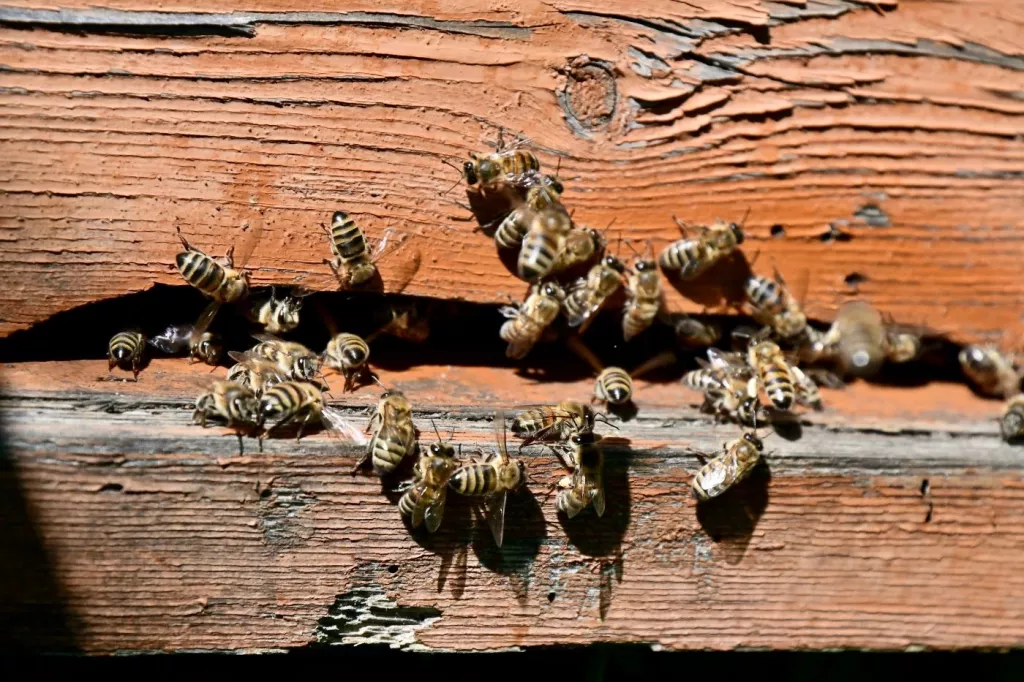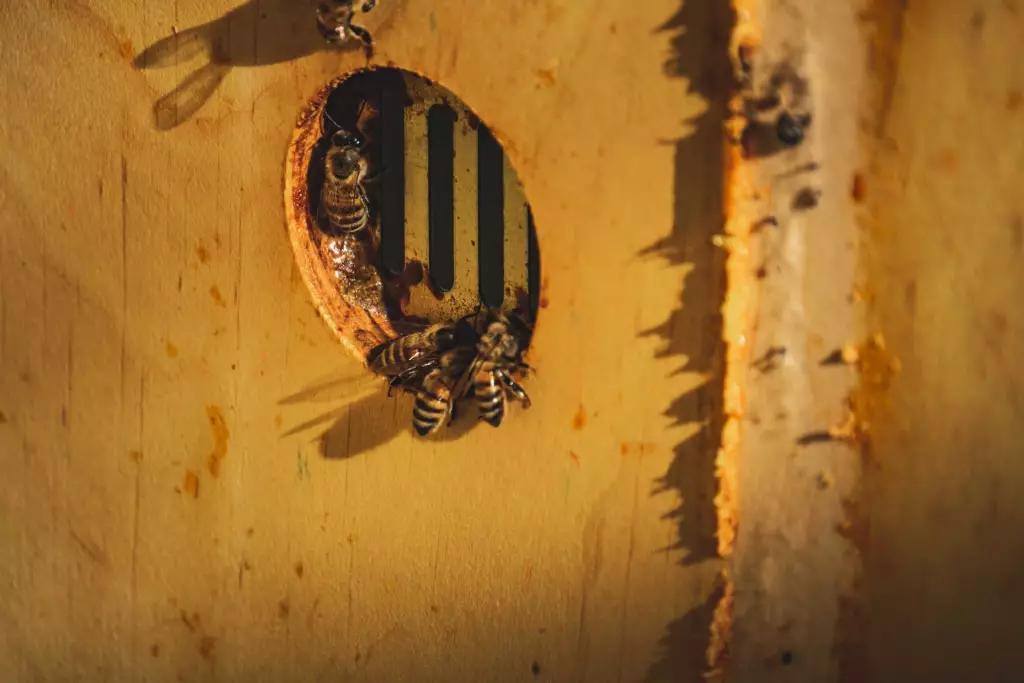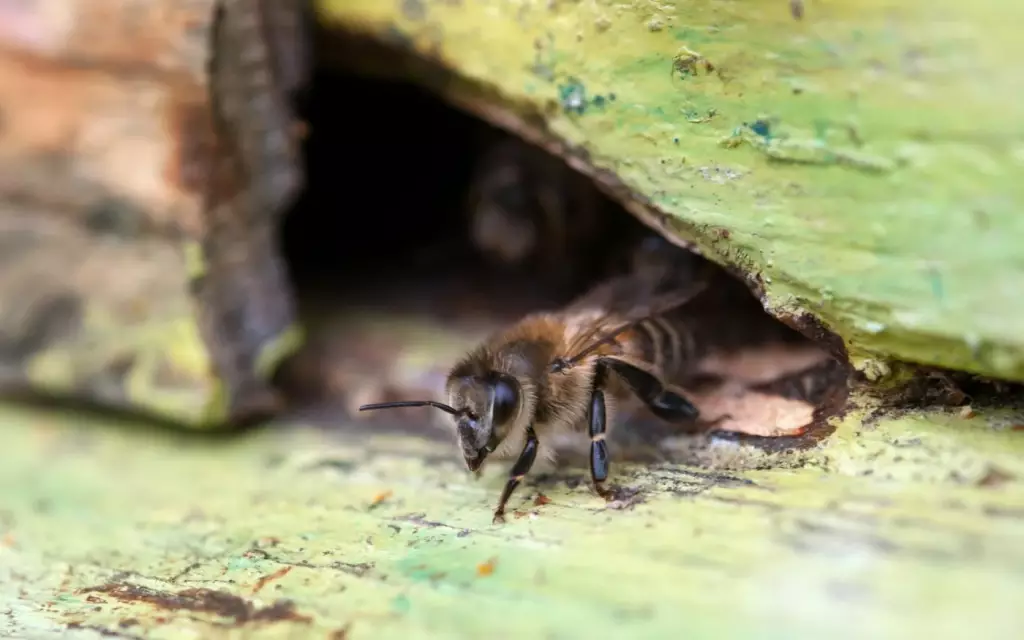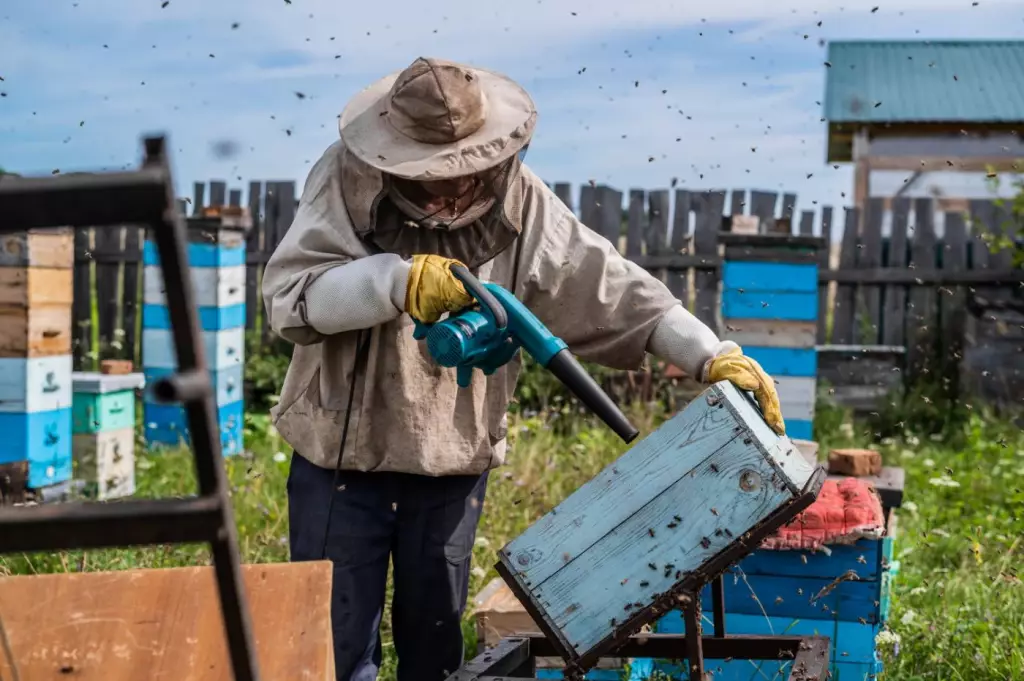How To Stop Honeybees from Making a Hive (3 Ways)
The greatest strategy for dealing with honey bee nesting issues is prevention. When bees build their hives in walls, ceilings, or other areas, the holes they create could lead to structural damage as well as possible pest problems.
To stop honeybees from creating a hive, you can block off any entrances to the hive, remove old honeycomb and yard clutter, or plant fragrant flowers like lavender, peppermint, and eucalyptus that scare them off. If the bees are persistent, the best thing to do is to call a professional beekeeper.
Understanding that honeybees like to live in protected cavities, entering through a small hole, is essential to solving the issue. Any home could have areas where honeybees can enter and gain access to cavities in walls, since these tiny openings are frequently left near utility and plumbing conduits that enter the house.
Summary
- Dealing with a honeybee colony that has already established itself in your wall can be considerably more expensive and stressful than taking preventative measures.
- Bee proof your property before the swarm season.
- During peak swarm season (April to May), walk around your house at least once a week to look for bee colonies attempting to establish themselves in structures. Find the colonies early and resolve the problem before they grow and expand.

On this page:
Ways To Stop Bees From Making A Hive
Keeping an eye out for signs of honeybee activity is critical in order to prevent a hive from forming. Look for items such as burrows, wax combs, and honeycombs, which are often indicators that bees are nearby.
Don't take a chance; if you notice anything that looks like it could be related to bees, take action right away.
Taking immediate measures is the best way to avoid costly repairs or hazardous removal services at a later date. So be sure to pay attention to your surroundings and look out for any potential signs of bee activity.
Although the homeowner may incur some large costs for this, dealing with an established colony of honeybees in your wall can be much more expensive and stressful than taking preventative precautions.
No matter which method you choose, it's important to be persistent in your efforts. Check for signs of bee activity regularly and take action as soon as possible if you notice anything suspicious.
Block off any possible entry points for new honeybees
Blocking potential entry points for honeybees is an important part of keeping them out of your home. Even the smallest of cracks or crevices could be enough for these buzzing critters to squeeze their way in, creating a beekeeping situation that you likely wouldn't enjoy dealing with.

Keeping bees out of your house could be a difficult task if you don't take the opportunity to do some proactive work.
Any windows, doors, or other openings provide opportunities for bees to get in, so it's best to inspect them first. If you find even small gaps, then all it takes is some caulk and a few minutes of your time to patch them up.
This extra effort will eliminate any potential issues in the future and save you from having an unwelcome bee infestation in your home.
Eliminate old honeycomb and yard clutter
If you previously had a hive within your house, make sure that all the old honeycomb was completely removed. Pheromones found in old honeycomb may draw bees to one location. Typically, the honeycomb will be located in an inaccessible space (wall voids, eaves, etc.), therefore, you might need to take off some of your siding or roof.
Bees can't build nests in your yard if there is too much outside litter, so reduce it. Honey bees can be drawn to abandoned appliances or lawn equipment because they offer enough shelter for a hive to grow.
Swarming bees may target yards that are cluttered with dead tree limbs, old appliances, abandoned vehicles, or other sizable, infrequently used objects. Remove these things from the yard and cut down dead limbs, especially if they are close to a shed, garage, or your house.
Plant herbs or fragrant flowers
If you're looking for bee-free bliss and prefer a more natural approach, there are thankfully some effective methods available. Planting fragrant flowers like lavender, peppermint, and eucalyptus is a good way to keep them at bay.
Plus, if you have an extractor fan directly outside your home or yard, it'll create an air current that will make it harder for the bees to fly into your area. Setting out shallow dishes with a soapy water or vinegar solution can serve as another measure to trap bees and reduce their numbers around your property.
These natural methods may not be as swift and effective at controlling the bee population as chemical treatments. However, they get the job done in a much safer way.
How to Handle an Established Colony in a Building
Examine the exterior of the building to find any potential entry points to cavities in order to keep honey bees from building a nest in your home. Depending on where the holes are, the openings can then be closed off using caulk or expanded foam. It's also possible that some carpentry has to be changed or enhanced. To keep bees out, rotted wood that sags and provides access to gaps needs to be fixed and well sealed.

Cut out the beehive
The beauty of utilizing a practice as old and simple as 'cutting out' for honey bee hive dispersal is its effectiveness. While we now have plenty of technology that can be used to rid us of an overabundance of honey bees, nothing quite seems to do the job like 'cutting-out'.
This cutting out process entails cutting away a part of a wall or tree in which the bees are built a hive down to the bees and all of their comb. Additionally, there must be a thorough cleanup to get rid of all the wax, honey, and other sticky bee byproducts.
Using a smoker near the hive will create a thick blanket of smoke that discourages the bees from staying and causes them to fly away.
Taking it one step further, beekeepers then cut into the removed piece of wall or wood to locate the queen bee and remove her separately, ensuring that no colony remains behind.
Utilize a bee vacuum
Bee vacuums are becoming an increasingly popular alternative to traditional bee removal methods, and for good reason. They offer a relatively simple and humane way of getting rid of honeybee hives without having to harm the bees themselves. The process works by carefully sucking the bees out of their hive and into a container using a special vacuum tool.
Once safely contained, the bees can be relocated away from your home, allowing them to build a new hive elsewhere - and the original hive can then be fully destroyed. Bee vacuums make it easy to safely and effectively remove honeybees from your home while still allowing them to thrive in their new location—they're virtually win-win.

This method is a safe and humane way to remove honeybee hives, as it does not harm the bees, allowing them to survive after being relocated. It also eliminates any potential danger of getting stung during the removal process, making it ideal for those who do not know how to handle bee colonies
Call in a professional beekeeper to remove the hive
When it comes to unwanted bee colonies around your home, it can be difficult and dangerous to attempt to remove them yourself. It's best not to risk it if you are uncertain about the job. There's always a professional beekeeper that can help with such a task.
These beekeepers specialize in relocating hives from properties and have the necessary tools and expertise required for the job.
Not only is this the most safe option out of all attempts at removing the hive, but it will also ensure minimal harm to any of the bees living in it. So don’t risk your safety or that of the bees—call up a trustworthy beekeeper.